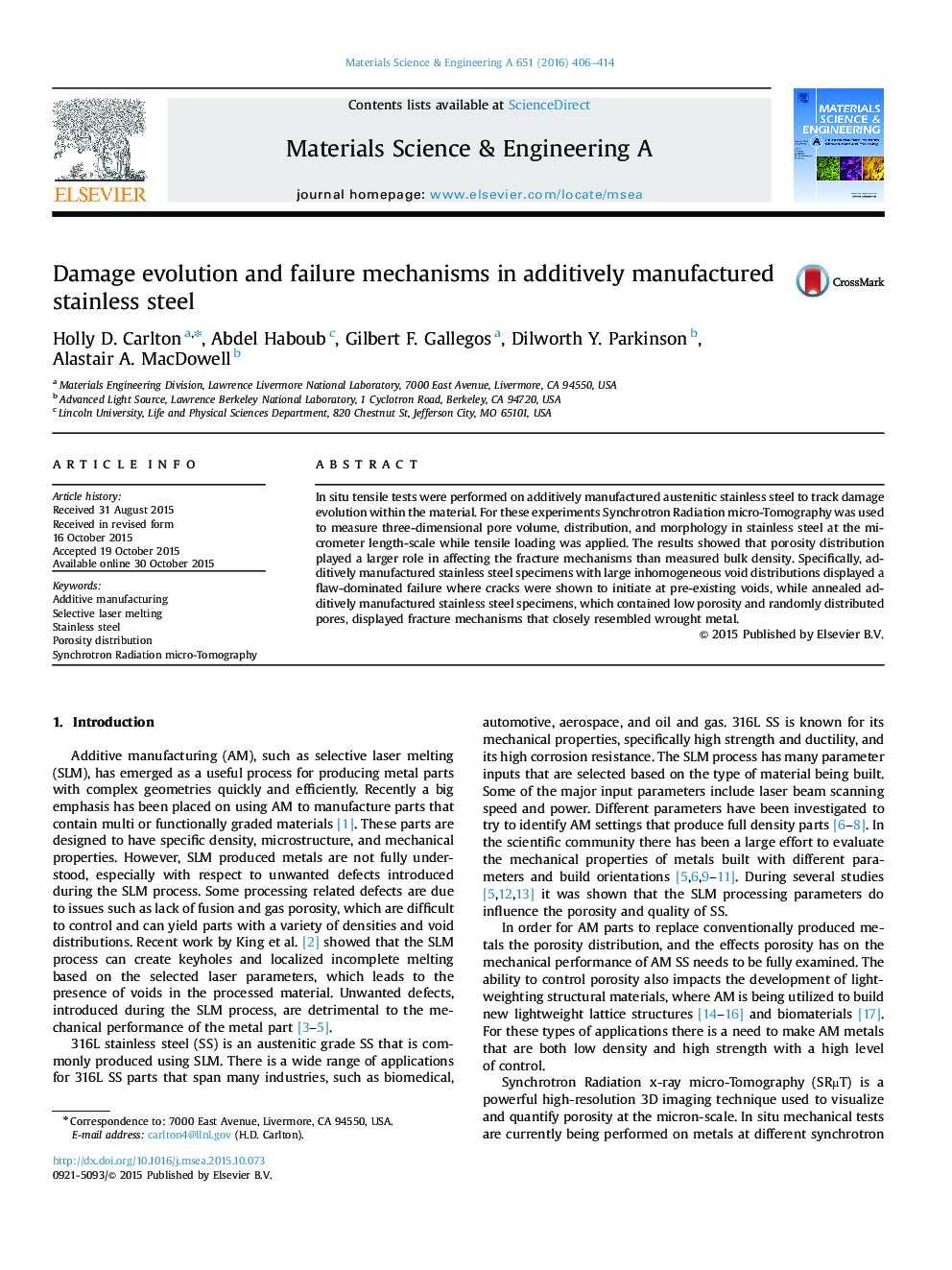| Article ID | Journal | Published Year | Pages | File Type |
|---|---|---|---|---|
| 7976014 | Materials Science and Engineering: A | 2016 | 9 Pages |
Abstract
In situ tensile tests were performed on additively manufactured austenitic stainless steel to track damage evolution within the material. For these experiments Synchrotron Radiation micro-Tomography was used to measure three-dimensional pore volume, distribution, and morphology in stainless steel at the micrometer length-scale while tensile loading was applied. The results showed that porosity distribution played a larger role in affecting the fracture mechanisms than measured bulk density. Specifically, additively manufactured stainless steel specimens with large inhomogeneous void distributions displayed a flaw-dominated failure where cracks were shown to initiate at pre-existing voids, while annealed additively manufactured stainless steel specimens, which contained low porosity and randomly distributed pores, displayed fracture mechanisms that closely resembled wrought metal.
Related Topics
Physical Sciences and Engineering
Materials Science
Materials Science (General)
Authors
Holly D. Carlton, Abdel Haboub, Gilbert F. Gallegos, Dilworth Y. Parkinson, Alastair A. MacDowell,
